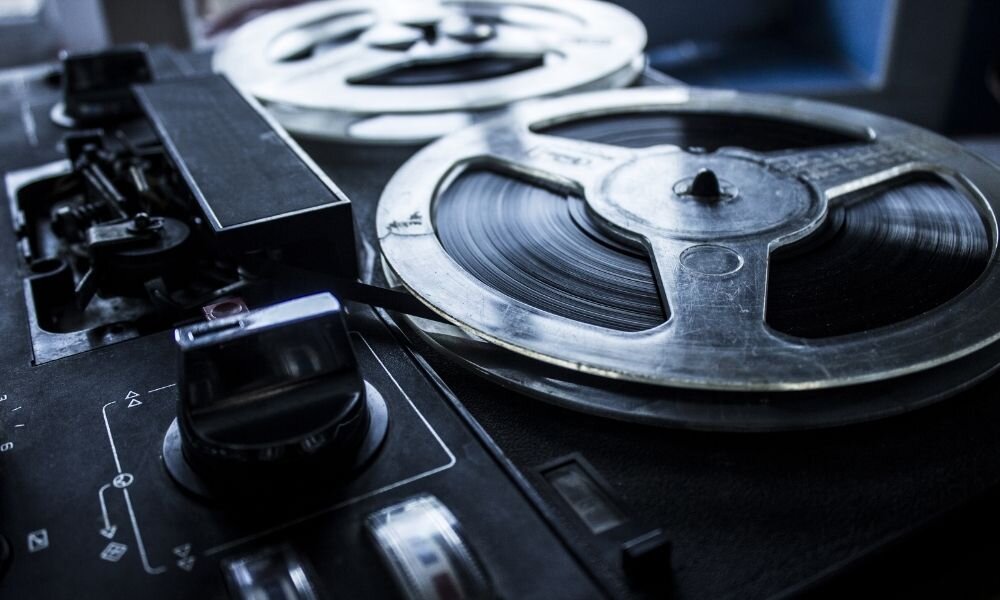The History of Reel-to-Reel Audio Tape Recording
While you’re working with obsolete audio formats, it’s important to know where they came from and how the format came to be. History is an essential part of audio, film, and photo preservation. This historical flashback will focus on the history of reel-to-reel audio tape recording and how it went from an innocent entertainment medium to a tool of war, before making its way back to entertainment again. We’ll also look at some of the old materials that were used in reel-to-reel tape recording and their advancement.
Initial Development of Steel Tape
Reel-to-reel audio recorders originally used steel tape to record upon. This steel tape was the exact same material as razorblades and was known to shatter under stress—creating hazardous metal shards. The usefulness of a higher-quality audio recording on film outweighed the dangers, however. Before film-based reel-to-reel recordings, the only recording methods available were phonograph records and very early, low-quality editions of the electrical recording.
The earliest steel tape recorder was the Blattnerphone in the 1920s, named after its licensor and innovator, Ludwig Blattner. Originally born in Germany, he used the original format of a wire recorder and transmitted that technology to steel tape. He brought the technology to Great Britain when he emigrated and the Blattnerphone was used to record King George V’s speech during the India Round Table Conference in November of 1930. These steel tape recorders were mechanically difficult and laborious to handle, making them rather inconvenient.
Creation of Magnetic Tape
Magnetic audio recording tape is the audio recording method many people are most familiar with in reels. Right before World War II in 1935, the Germans created the Magnetophon—a reel-to-reel recorder with a magnetic film.
The high sound quality of the Magnetophone baffled the Allies. Recordings sounded just like a live radio broadcast. The Allies managed to acquire the technology after pushing into German territory towards the end of the war. Magnetophons were taken to America by John T. Mullin, known as Jack Mullin, who was an audio engineer that served in the U.S. Army Signal Corps.
American Development and Musical Innovation
After the war was over, Mullin demonstrated the recorder and the magnetic recording tape to Hollywood by presenting live music and playback of the live music behind curtains. People struggled to tell the difference between the two, and he gained the attention of the popular music star Bing Crosby. The appeal of moving away from live radio performances towards pre-recorded performances attracted Crosby to Mullin’s work. Together, they developed the technology further, even applying it to television shows and movies.
Reel-to-reel technology would become miniaturized for use as a home or school audio and voice recorder with ¼-inch audio tape in the reel. Digital audio tape ended the history of reel-to-reel audio tape recording in the music industry, which would instead use convenient cassette tapes for music playback. Whether you need to convert ¼-inch tape on 3, 5 7 or 10 inch reels, DAT, ADAT, 4 track, 8 track or audio cassettes to digital, DiJiFi can help you preserve precious auditory moments of history.

